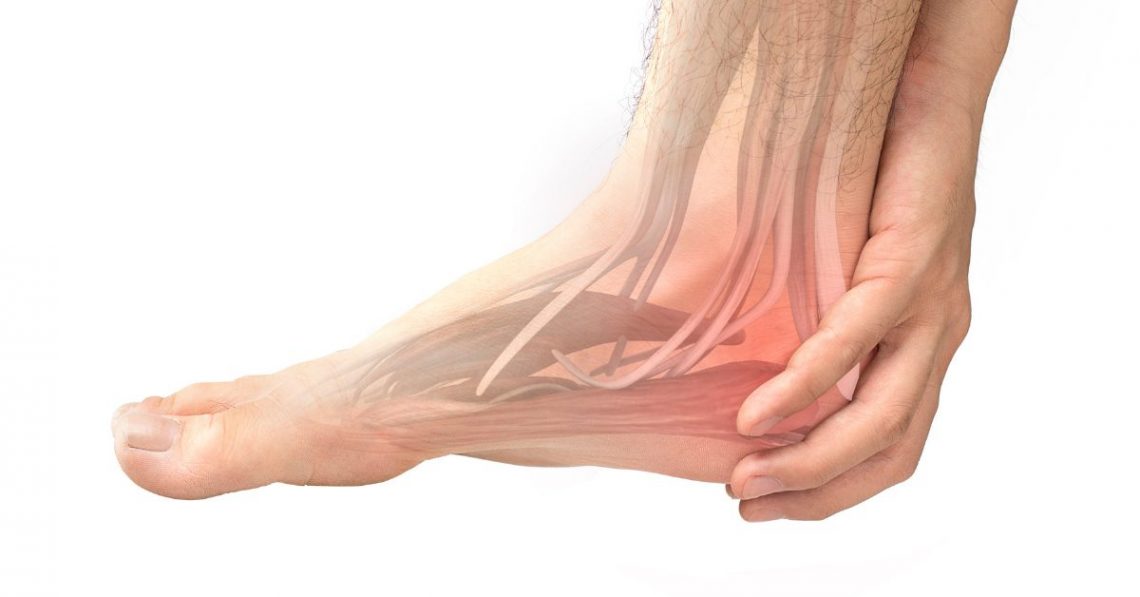Even Podiatrists Get Heel Pain!
Plantar fasciitis is one of the most common causes of heel pain. For the sufferer, it is often a debilitating condition that can be frustratingly slow to resolve if not treated promptly or methodically. In this two part series, Podiatrist David Hadden, talks about his own experience with plantar fasciitis and the steps he took towards becoming pain free and active once again.
How It Started
My experience with plantar fasciitis began in fairly typical fashion. After years of being physically active, I slowly succumbed to more sedentary habits and experienced weight gain. Resolving to improve my fitness I dusted off a neglected pair of old running shoes and started jogging on a daily basis after a years-long hiatus. Admittedly, there was not much consideration given to taking a slow and gradual approach to my fitness goals. Training typically involved a daily 4-6km run with 20 minutes of hill sprints or stair running thrown in for good measure; I was time poor and wanted results yesterday. In my younger years, my body had proven surprisingly resilient to high volume running and resistance training with little warm-up/cool-down or stretching, so what could possibly go wrong?
Plantar fasciitis is often caused by an increased load placed on the lower limb that the soft tissue structures of the foot have not developed the capacity to deal with. This increase in load may be caused by:
- Work that requires standing and walking on hard surfaces, often for prolonged periods
- Going barefoot on hard surfaces
- Starting a new exercise program or increasing training volume and/or intensity
- Weight gain
- Footwear that does not have adequate support or cushioning
What It Felt Like
Just over a week into my fitness journey, I woke up one morning and felt a stabbing pain underneath my right heel when getting up to go to the bathroom. It felt like a sharp poker was being pressed into the inside edge of my heel bone and arch area. The pain forced me to hobble for the first 5 minutes of the day, but then gradually eased off to be more of a background irritation for the remainder of the morning. This pattern of morning pain would repeat for several weeks. Eventually however, the stabbing pain underneath my right heel became more persistent, not just occurring in the mornings after waking up, but also after getting up following short periods sitting down. I found that the pain would change to a strong, dull ache the more time I spent on my feet; much like a deep bruise underneath my foot. It was changing the way I was both walking and running but, throughout all this, I stubbornly continued to jog and exercise each day. However, the pain became so severe that I was forced to take more frequent rest days from exercise, and eventually had to stop completely.
Plantar Fasciitis may include the following signs and symptoms:
- Stabbing pain and/or bruised sensation under the heel which may extend into the arch
- Heel pain which is usually worse with the first few steps in the morning and after rest periods during the day
- Heel pain which is aggravated by prolonged standing, walking or running, especially on hard surfaces
- As the condition progresses, patients may experience burning, numbness and throbbing around the heel when resting
An Accurate Diagnosis is Key
All the signs and symptoms of my right foot heel pain were pointing towards plantar fasciitis being the culprit. However, I knew that imaging was required to provide a definitive diagnosis and accurately guide any treatment. The foot is an elegantly complex structure consisting of multiple layers of muscle overlying numerous bones and joints, all interspersed with an intricate network of blood vessels and nerves. In the heel and arch areas, there are numerous soft tissue structures in addition to the plantar fascia which can be affected to produce symptoms similar to what I was experiencing. Precisely which structures were affected would influence the treatment approach, and thus the expected time-frame for my recovery. So, referral in hand, off I went to the radiology clinic for an ultrasound. Less than 48 hours after the quick and easy imaging process, I had the results on my desk. A distinct thickening of the fibres of the plantar fascia had been identified at the attachment site under my right heel bone, strongly suggestive of plantar fasciitis. Great. Now, all that was left to do was start treatment!
Apart from plantar fasciitis, there are many different conditions which can contribute to plantar heel pain and confound treatment aims if not accurately identified. Some of these include:
- Calcaneal stress fracture
- Calcaneal apophysitis
- Inflammatory arthropathy
- Osteomyelitis
- Fat pad atrophy or contusion
- Plantar fascia rupture
- Nerve compression or pathology
Musculoskeletal ultrasound is a widely used diagnostic tool that provides real-time and dynamic visualisation of soft tissue structures. It is non-invasive and highly sensitive for excessive thickening of the plantar fascia which is an objective indicator of plantar fasciitis
Watch out for David's next blog on the steps that he took to overcome his heel pain.

